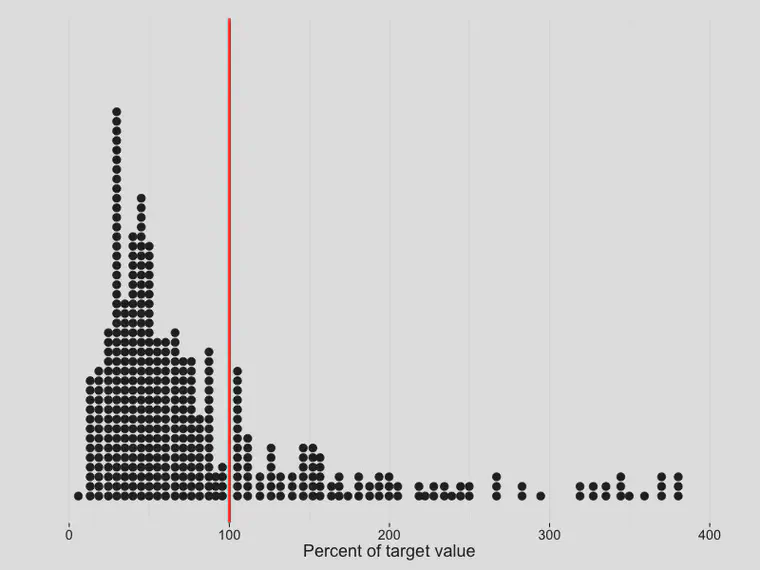Is this right? 73% of samples from good turf actually require more fertilizer?
In the Global Soil Survey (GSS), we looked at the soil nutrient levels in soil that was specially selected as being from areas where the grass is growing well. The first year of GSS data are available here.
If we look at the data for K, P, Ca, Mg, and S in the first year of GSS data, and compare the GSS results from actual good turf conditions to the target level (conventional guideline) of Carrow et al. at which the grass is not expected to show a response to that element, a full 73% of the samples fall below that target. This chart shows all the data, with 4 calcareous samples excluded for Ca only.

That’s a lot of good-performing turf that the conventional guidelines predict would respond to even more fertilizer. I think the conventional guidelines are a bit too high.